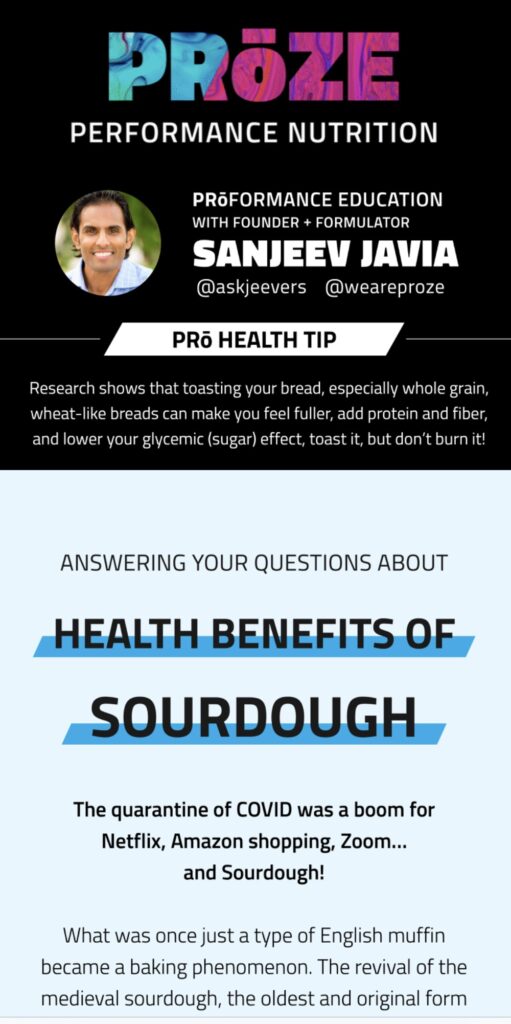The quarantine of COVID was a boom for Netflix, Amazon shopping, Zoom…and Sourdough! What was once just a type of English muffin became a baking phenomenon. The revival of the medieval sourdough, the oldest and original form of leavened bread. The Ancient Egyptians were obsessed with it, the San Franciscans claimed it during the 1800’s Gold Rush, and now we’re paying $6.00 a loaf to lather it with butter and jelly.
Move over sweet…Sour is Power!
What is sourdough bread?
Simply, it’s bread without the use of yeast. Yeast is what’s added to a bread mix (flour, sugar, water, salt), to make the bread rise and have the soft, chewy, fluffy texture. Sourdough, replaces Yeast with a “starter”, which is made from flour and water…there is no yeast, milk, oils, or sweetners. It’s about as natural as you can get when it comes to bread.
What makes it a healthier bread?
First off, the ingredients, there is only two – Flour + Water, then nature takes its course, making sourdough. But next, it’s the “nature’s course” the process called Fermentation. Fermentation is how the bread rises, and contributes to its texture, mouth feel, and taste. Fermentation is the KEY to sourdoughs health value.
How does fermentation make it healthy?
It breaks down nutrients that can be problematic for some:
Gluten – gluten is a known allergen that can cause digestive irritation and abuse, fermentation can break down some of the gluten in flour, making it easier to digest for some individuals sensitive (not intolerant!) to gluten.
Phytic Acid – phytic acid is naturally occurring in grains and flours, it’s an “anti-nutrients” binding to minerals, especially zinc, iron, and calcium, making them hard to absorb, fermentation can break this acid down.
Probiotics – these are healthy bacteria that live in your gut that allow you to break down food and utilize the nutrients, fermentation creates healthy bacteria in the bread.
Good for diabetics?
Better than regular white bread. Research shows that sourdough has a lower glycemic (sugar) effect on the body, managing sugar and insulin levels.
How do I make my sourdough more healthier?
Use healthier flour. Using rye or whole wheat (wholemeal) flour instead of white flour can increase the amount of brand chain amino acids by 10 to 17x! This doesn’t include all the other vitamins, minerals, and fiber you increase when using these flours. You can also greatly reduce the glycemic (sugar) response, make it easier on the system to digest, and the enhance the feeling of fullness (making you eat less!).
How do you eat sourdough bread?
I eat two pieces every day with my breakfast with butter and garlic spread. I love how it taste with my eggs and arugula salad. The sourdough gives me just enough carbohydrates but pairs it with healthy fiber. The bread is easy to eat, I feel light afterwards, and the carbohydrate fuel is perfect to help the recovery after my workout (before breakfast) and fuels me to get into the office.




